
Recently, the jewelry brand Boodles launched a “Masterpiece” series inspired by the collection of the National Gallery in London, effortlessly combining art with luxury. However, they are not the first jewelry designers to draw inspiration from “world-famous paintings.” In fact, there are enough jewelry pieces offering this dual enjoyment to curate an entire exhibition!
Boodles introduced this new series to celebrate the 200th anniversary of London’s National Gallery. The British jeweler drew inspiration from the museum’s treasured masterpieces, including Monet’s “Water Lilies, Setting Sun” and Raphael’s “The Garvagh Madonna,” to create 34 pieces of jewelry.
The collection is straightforwardly named “National Gallery,” but the concept behind each piece is quite ingenious, capturing the essence of these world-renowned paintings.
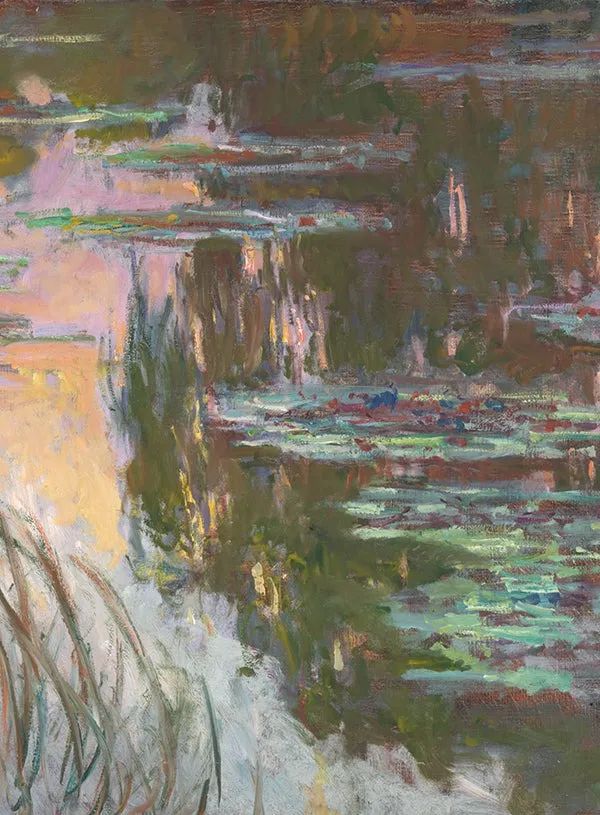
Circa 1907
For instance, from Monet’s “Water Lilies, Setting Sun,” Boodles extracted the impressionist’s signature play of light and shadow. In the painter’s eyes, every ray of light is ever-changing and possesses myriad colors.
As a result, Boodles created the “Play of Light” themed necklace, using various shades of pink tourmalines and spinels, along with orange garnets and other pink-orange hued gemstones to harmonize with Monet’s serene pond landscape at sunset.
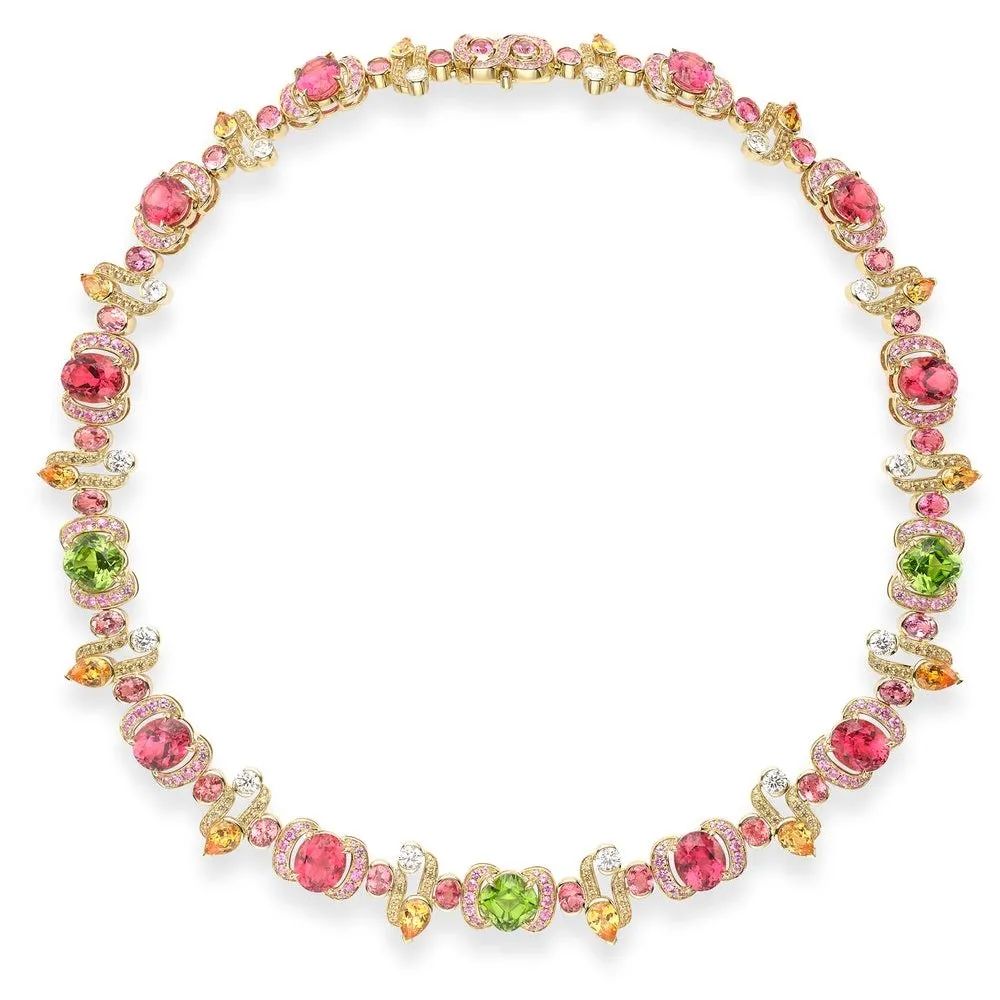
Play of Light Necklace
Tourmaline, spinel, garnet, peridot, sapphire, diamond
For their interpretation of works by Raphael, one of the three masters of the Renaissance, Boodles found a new perspective. It’s well known that Raphael’s most proficient subject matter was Madonna paintings, and he excelled at expressing the maternal radiance of the Virgin Mary.
“The Garvagh Madonna,” treasured by the National Gallery in London, is one of his representative works. Therefore, Boodles focused on expressing the emotional “mother-child relationship.”
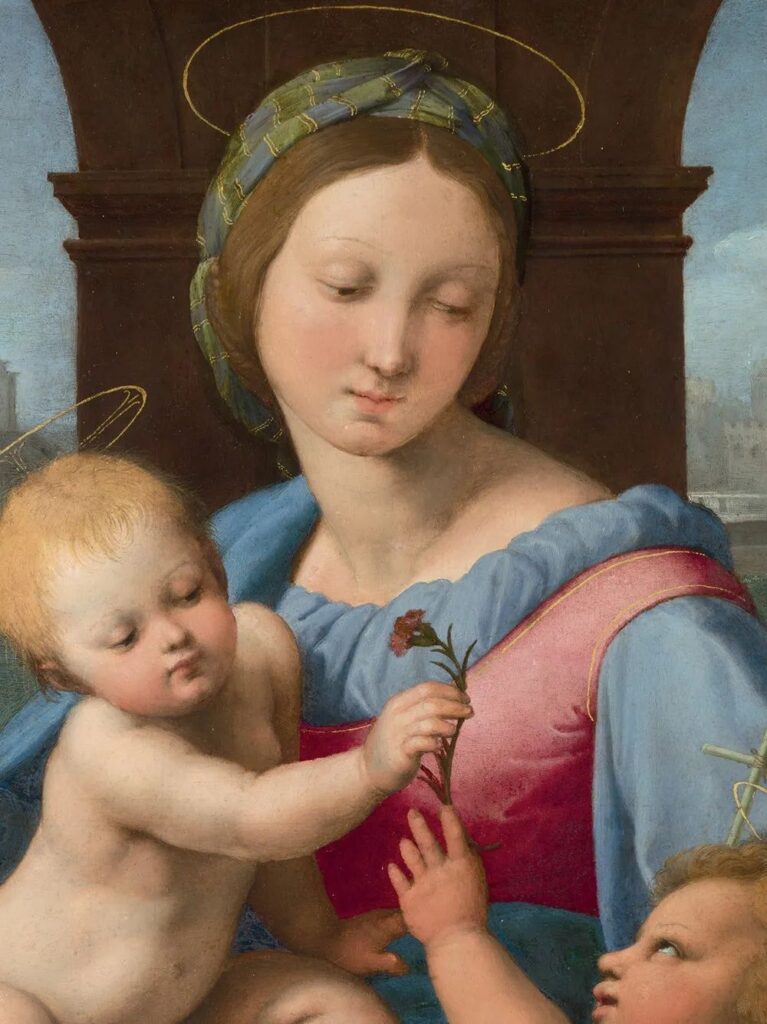
Circa 1510-1511
Boodles introduced a “Motherhood” themed piece, utilizing gemstones of different textures and clever composition to abstractly express the Madonna holding the Christ Child. A clear and encompassing aquamarine nestles closely with a soft and gentle moonstone at a subtle angle, just as a mother embraces her child.
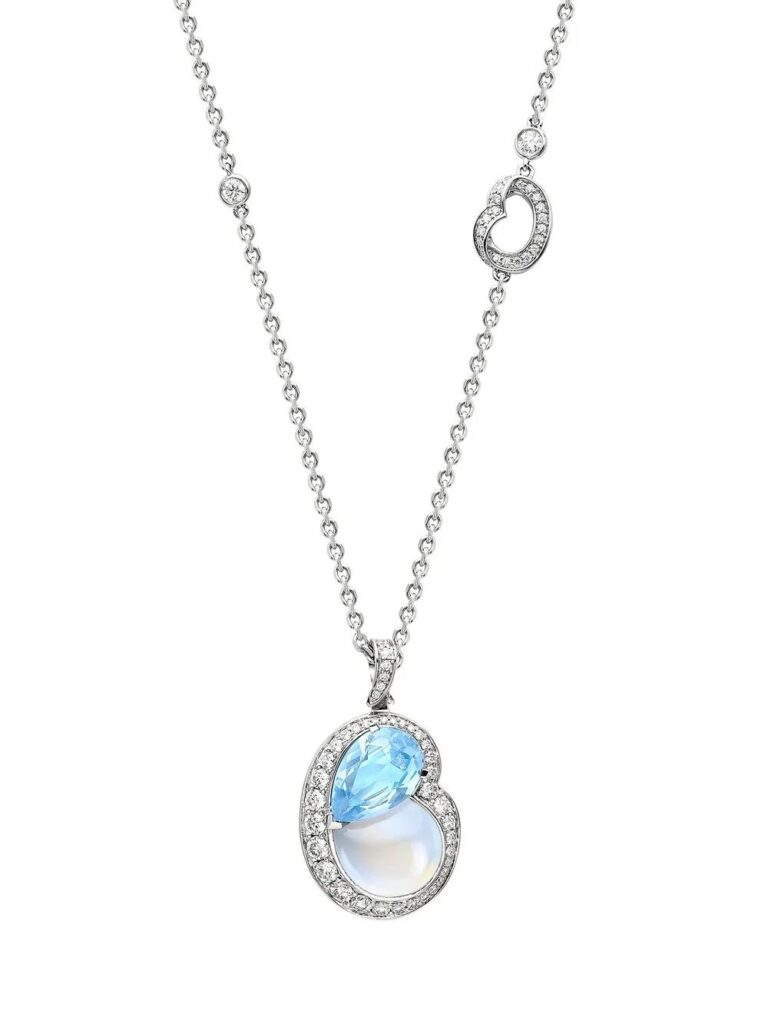
Motherhood Necklace
Aquamarine, moonstone, diamond
Jewelry designer Carina Hardy has a different approach to interpreting famous paintings. When she saw Botticelli’s “The Birth of Venus,” she didn’t perceive it as a symbol of beauty and love, as many aestheticians do, but rather as a representation of women’s resilience and grace. She believes that Venus rising from the water also represents the close connection between women and the water element.
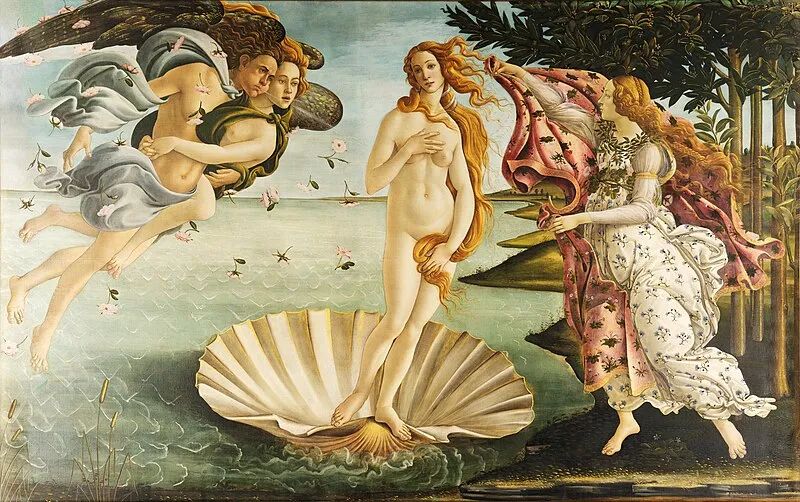
Circa 1480
Consequently, she crafted 18K yellow gold into a teardrop shape, symbolizing the womb, with a statue of Venus inside, standing on a shell surrounded by scattered diamonds. This is her interpretation of the birth of the goddess of beauty, or rather, her jewelry representation of feminine beauty.
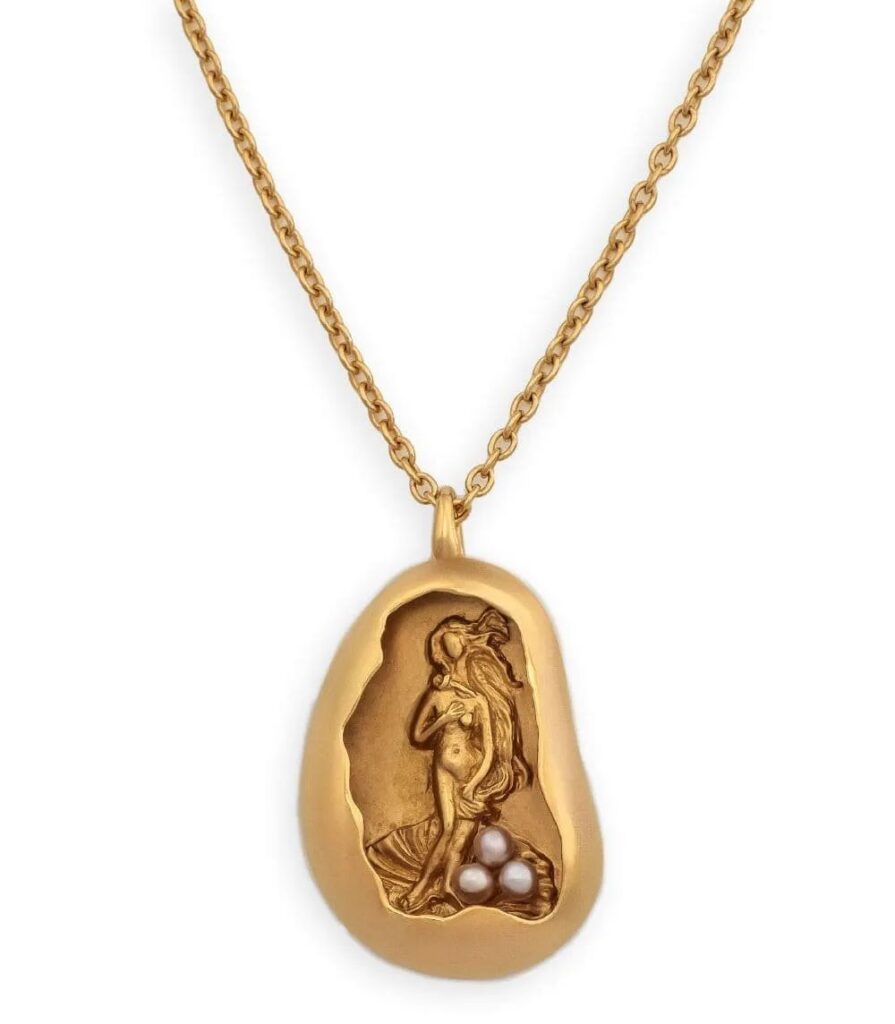
Italy was the center of the Renaissance, and when Leonardo da Vinci initiated the naturalist art movement, it influenced the aesthetics of many mainstream painters of the time, including court painter Giuseppe Arcimboldo.
While you might not be familiar with this name, you’ve likely seen and been impressed by his representative work. His portrait series “The Four Seasons,” depicted with fruits and vegetables, is so avant-garde and bold that it’s hard to believe it’s the work of a 16th-century painter.
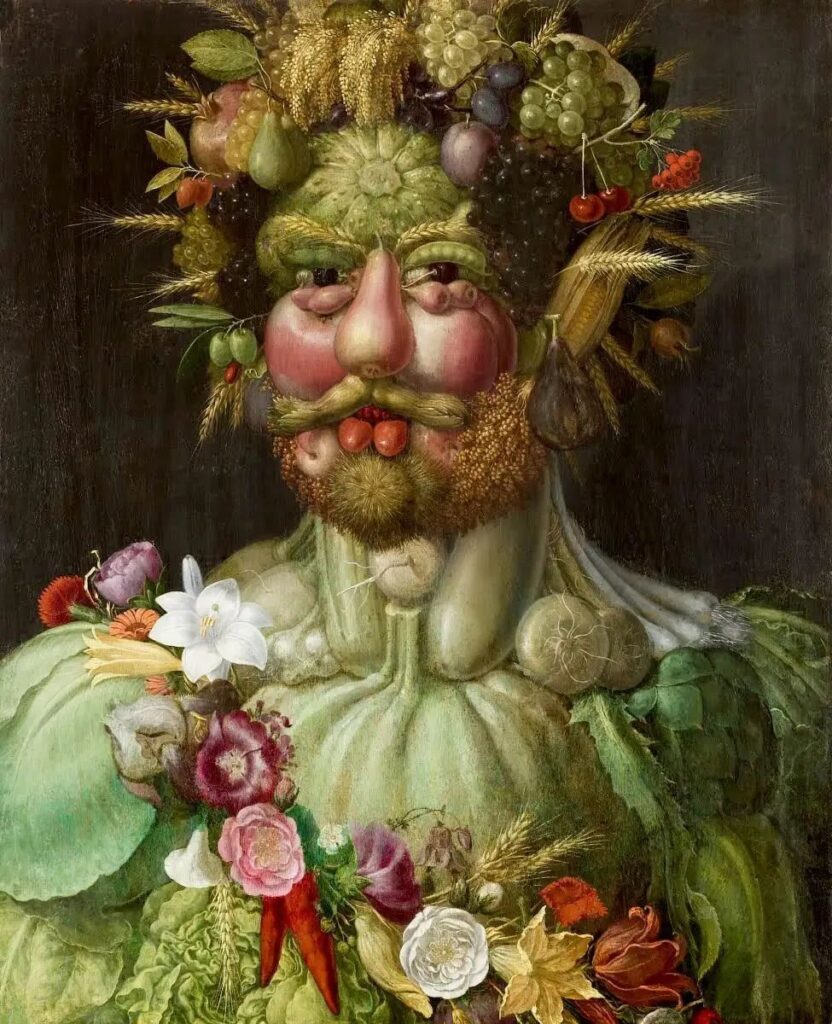
The painter’s “compatriot,” Italian jewelry designer Licia Mattioli, once again showcased naturalism in another way. She demonstrated high-end craftsmanship by creating a miniature, three-dimensional version of “The Four Seasons” using various gemstones. Amazingly, even today, it still looks avant-garde and bold.

Ruby, sapphire, opal, crystal, tourmaline, amethyst
Russian jewelry designer Ilgiz Fazulzyanov is highly skilled in the “painted enamel” technique. When he draws inspiration from famous paintings, people expect him to design jewelry with enamel paintings as the “main stone,” similar to jewelry pieces from the Art Nouveau period.
However, he didn’t simply replicate this approach. Instead, he captured the atmosphere to perfection, which is fitting considering his inspiration came from the “master of atmosphere,” Monet.

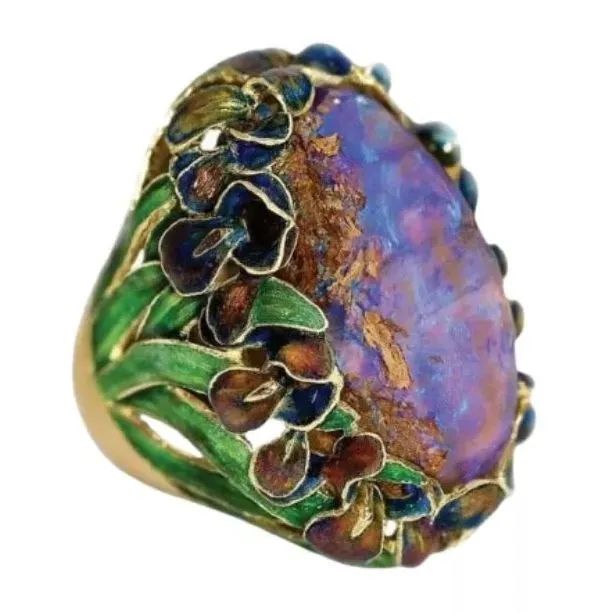
Indeed, when Ilgiz Fazulzyanov interpreted the Impressionist masterpiece “Irises” in jewelry form, he chose an opal with a perfectly matching color scheme as the centerpiece. He utilized the opal’s play-of-color effect to capture the unique light and shadow characteristics of Impressionism.
He then created three-dimensional irises using his “painted enamel” technique, surrounding and complementing the opal.
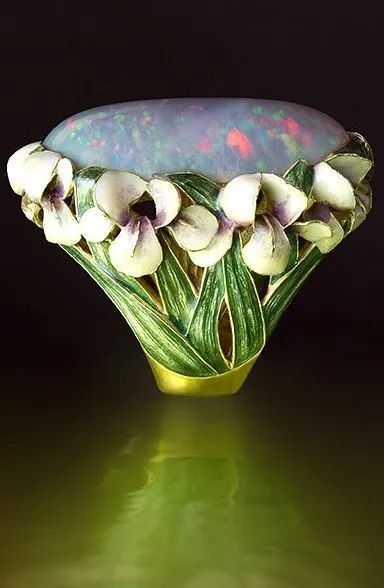
Some jewelry designers prefer a more direct approach, believing that the beauty of famous paintings lies in their visual impact. The Italian jewelry brand Jewellery Theatre, known for its superior pavé setting technique, used colored gemstones as “paint” to recreate the still life fruits from the works of Caravaggio, the pioneer of the realist style.
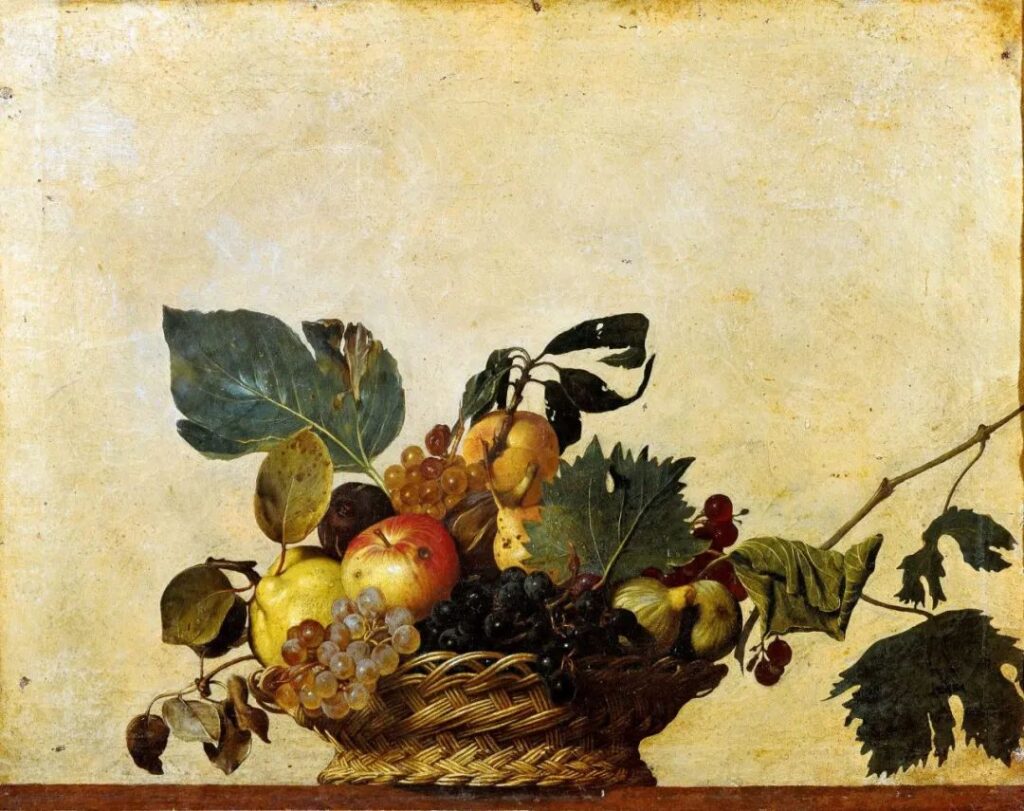
Caravaggio was renowned for his use of strong light and shadow contrasts—his paintings skillfully blended highlights and shadows, light and dark tones, to create a realistic, three-dimensional effect in his depiction of fruit. Jewellery Theatre captured this essence by carefully selecting and setting contrasting gemstones in their “fruit” jewelry, creating a bold style reminiscent of a “three-dimensional painting.”
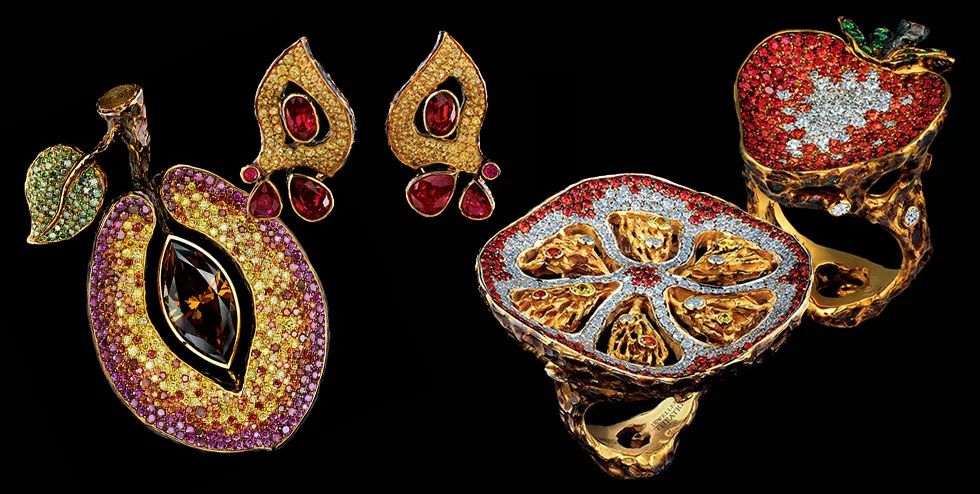
Carlo Palmiero, an Italian jewelry designer also skilled in gemstone pavé setting, adopted a similar strategy but drew inspiration from modern painters. He admired artists such as Mondrian, a representative of geometric abstraction; Picasso, a pioneer of Cubism; and Edvard Munch, an Expressionist master.
The works of these modernist painters emphasize geometric elements, giving Palmiero room for creativity. He used rings as his canvas, with gemstones as his medium of expression.

As a result, you have the opportunity to wear and admire Edvard Munch’s “The Scream” on your hand, or don Mondrian’s famous primary color geometric lines, which perfectly complement Yves Saint Laurent’s dress designs, demonstrating the interconnectedness of different art forms.

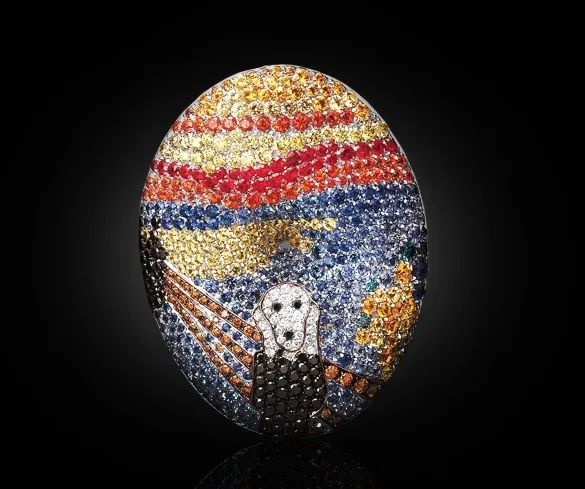

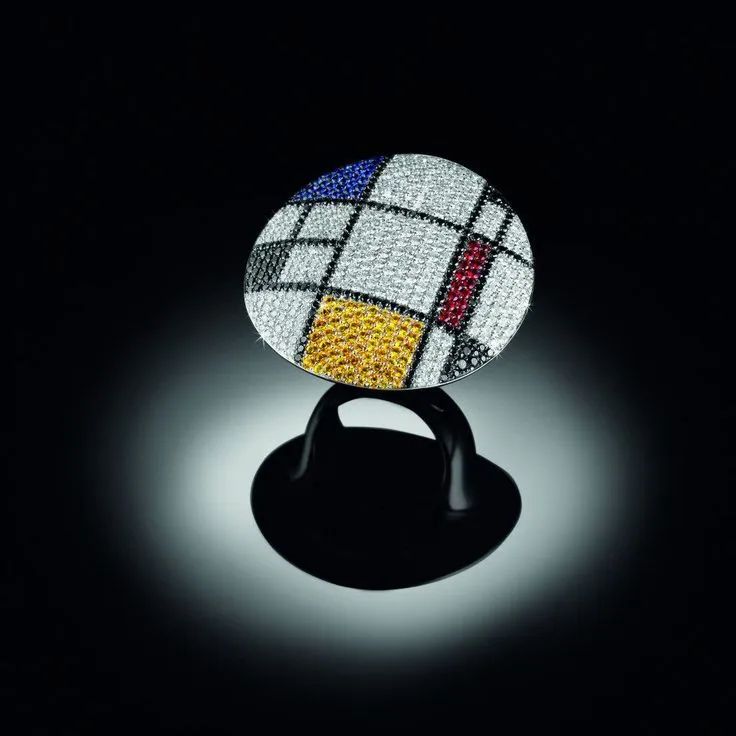
We conclude this “mini art lesson” with Buccellati’s “Eternal Blue” exhibition. This renowned Italian jewelry brand, famous for its goldsmithing, once drew inspiration from Impressionist and Post-Impressionist paintings to create five jewelry pieces.
During the opening of their New York flagship store, they held a dual art exhibition where visitors could appreciate both these timeless paintings and another form of “wearable art.”

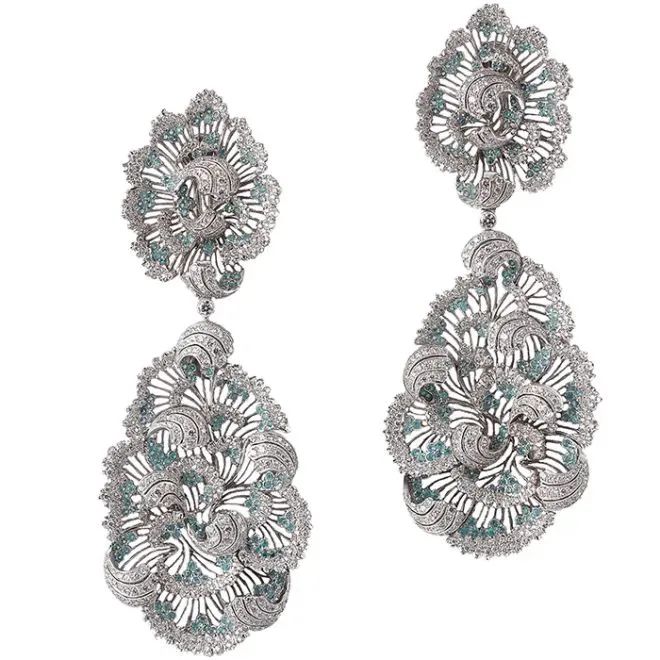
“Storm on the Coast of Belle-Île” Earrings
Buccellati used their extraordinary goldsmithing skills to capture the brushstrokes, forms, and light-and-shadow effects of the painting. It’s as if they’ve recreated the beautiful scenery in the painter’s mind in three dimensions using a line drawing technique, making one marvel at their understanding and resonance with the artwork.
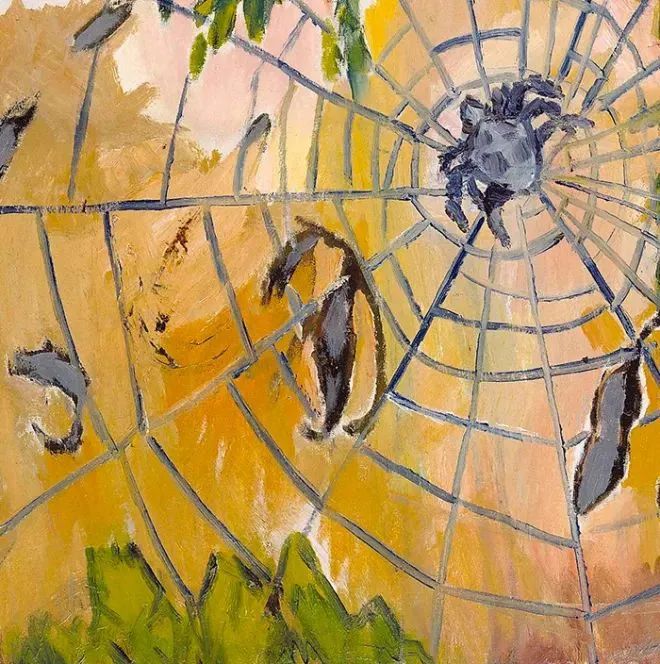
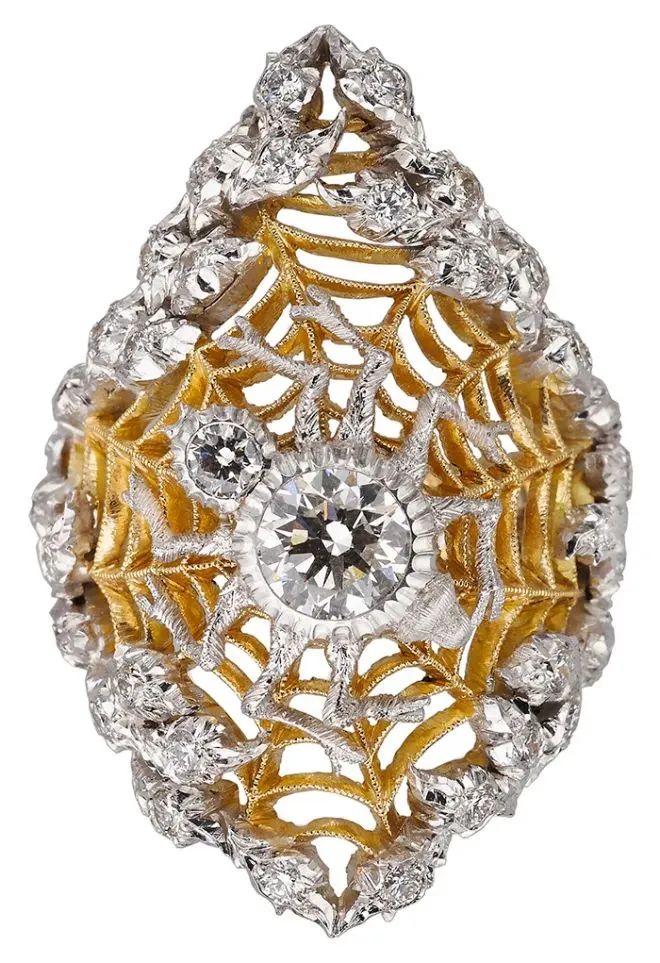
Would you consider collecting this type of “dual art”? It not only showcases your jewelry taste but also demonstrates your level of art appreciation.
After all, these famous paintings are housed in museums, and no matter how much you love them, you can’t take them home. But with these painting-inspired jewelry pieces, you can carry your favorite artwork with you wherever you go.
Priceless Masterpieces: Jewelry Inspired by World-Famous Paintings
Tweet





